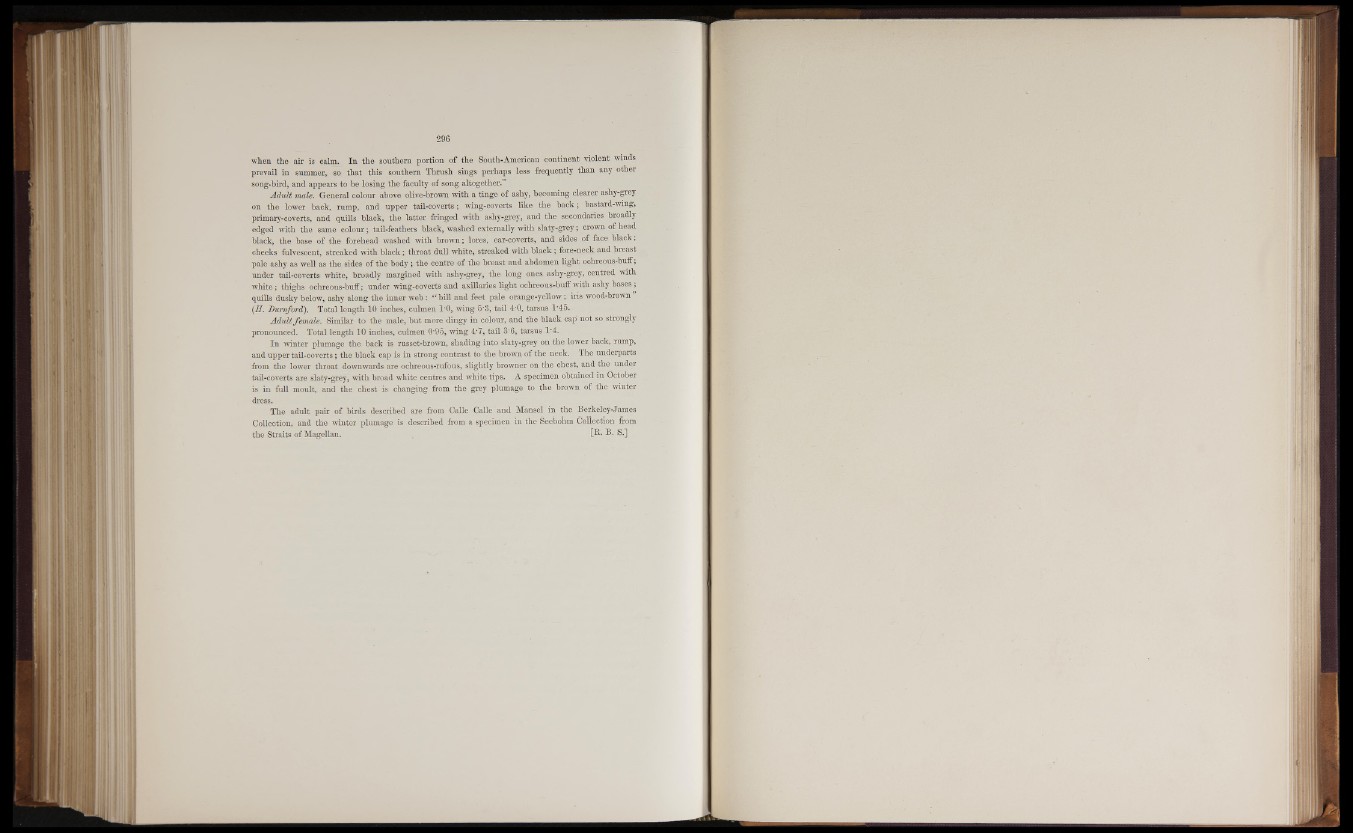
when the air is calm. In the southern portion of the South-American continent violent winds
prevail in summer, so that this southern Thrush sings perhaps less frequently than any other
song-bird, and appears to be losing the faculty of song altogether.”
Adult male. General colour above olive-brown with a tinge of ashy, becoming clearer ashy-grey
on the lower back, rump, and upper tail-coverts; wing-coverts like the back; bastard-wmg,
primary-coverts, and quills black, the latter fringed with ashy-grey, and the secondaries broadly
edged with the same colour; tail-feathers black, washed externally with slaty-grey; crown of head
black, the base of the forehead washed with brown; lores, ear-coverts, and sides of face black;
cheeks fulvescent, streaked with black; throat dull white, streaked with black; fore-neck and breast
pale ashy as well as the sides of the body; the centre of the breast and abdomen light ochreous-buff;
under tail-coverts white, broadly margined with ashy-grey, the long ones ashy-grey, centred, with
white; thighs ochreous-buff; under wing-coverts and axillaries light ochreous-buff with ashy bases ;
quills dusky below, ashy along the inner web: t( bill and feet pale orange-yellow; iris wood-brown
(H. Dumford). Total length 10 inches, culmen TO, wing 5'3, tail TO, tarsus T45.
Adult female. Similar to the male, but more dingy in colour, and the black cap not so strongly
pronounced. Total length 10 inches, culmen 0-95, wing 4-7, tail 3'6, tarsus 1‘4.
In winter plumage the back is russet-brown, shading into slaty-grey on the lower back, rump,
and upper tail-coverts; the black cap is in strong contrast to the brown o f the neck. The underparts
from the lower throat downwards are ochreous-rufous, slightly browner on the chest, and the under
tail-coverts are slaty-grey, with broad white centres and white tips. A specimen obtained in October
is in full moult, and the chest is changing from the grey plumage to the brown of the winter
dress.T
he adult pair of birds described are from Calle Calle and Mansel in the Berkeley-James
Collection, and the winter plumage is described from a specimen in the Seebohm Collection from
the Straits of Magellan. , L®* .
i